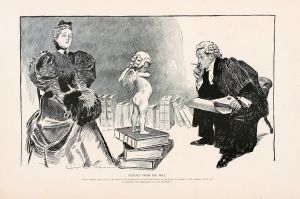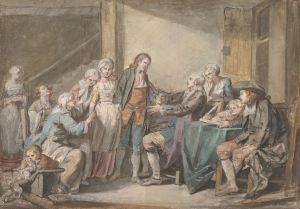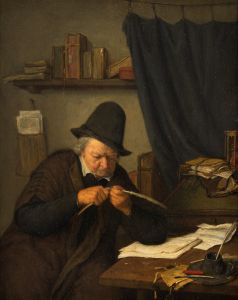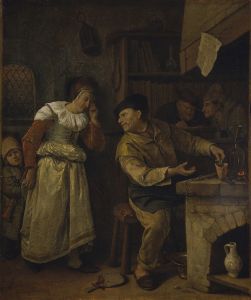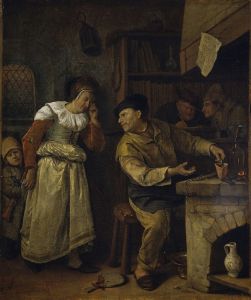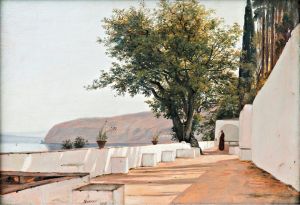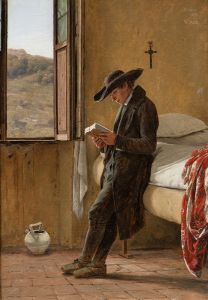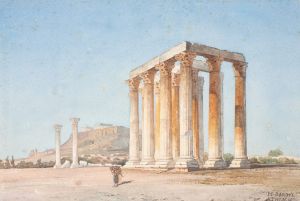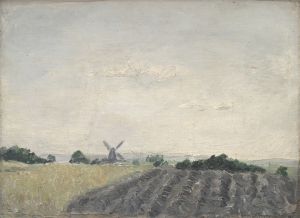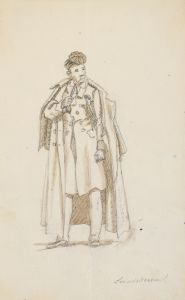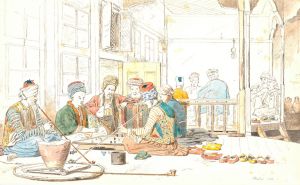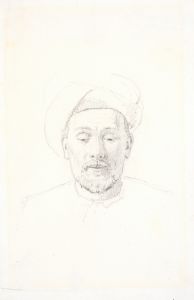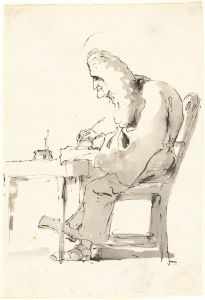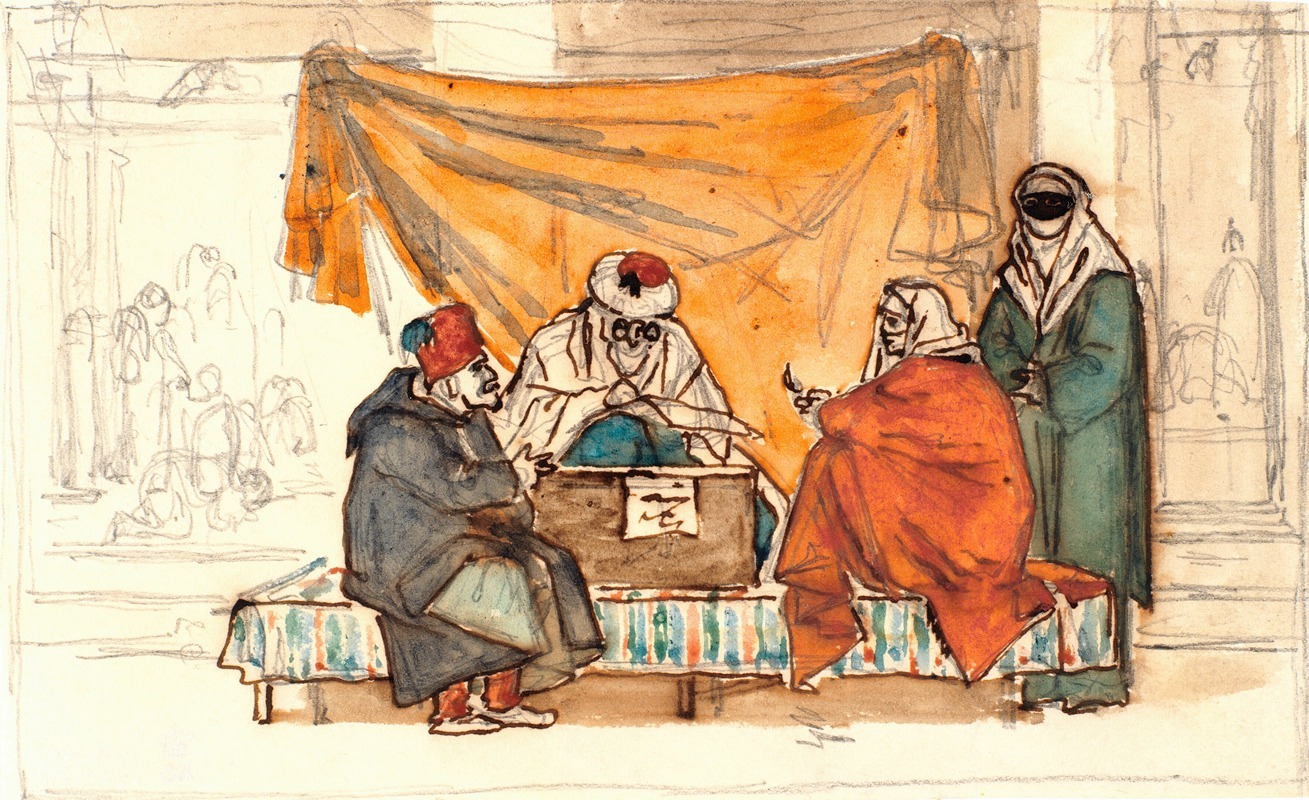
En tyrkisk notarius opsætter en ægteskabskontrakt
A hand-painted replica of Martinus Rørbye’s masterpiece En tyrkisk notarius opsætter en ægteskabskontrakt, meticulously crafted by professional artists to capture the true essence of the original. Each piece is created with museum-quality canvas and rare mineral pigments, carefully painted by experienced artists with delicate brushstrokes and rich, layered colors to perfectly recreate the texture of the original artwork. Unlike machine-printed reproductions, this hand-painted version brings the painting to life, infused with the artist’s emotions and skill in every stroke. Whether for personal collection or home decoration, it instantly elevates the artistic atmosphere of any space.
"En tyrkisk notarius opsætter en ægteskabskontrakt" (A Turkish Notary Draws Up a Marriage Contract) is a painting by the Danish artist Martinus Rørbye, created in 1837. Rørbye was a prominent figure in the Danish Golden Age of painting, a period characterized by a focus on realism, attention to detail, and a fascination with different cultures and landscapes. This painting is a notable example of Rørbye's interest in capturing scenes from his travels, particularly those that depict everyday life in foreign lands.
Martinus Rørbye was born in 1803 in Drammen, Norway, and later moved to Denmark, where he became a significant part of the Danish art scene. He studied at the Royal Danish Academy of Fine Arts in Copenhagen and was influenced by the works of Christoffer Wilhelm Eckersberg, often considered the father of Danish painting. Rørbye's travels across Europe and the Mediterranean were instrumental in shaping his artistic style and subject matter.
The painting "En tyrkisk notarius opsætter en ægteskabskontrakt" is a result of Rørbye's travels to the Ottoman Empire, specifically to regions that are part of modern-day Turkey. During the 19th century, the Ottoman Empire was a source of fascination for many European artists, who were intrigued by its rich history, culture, and the perceived exoticism of its people and customs. Rørbye's work reflects this interest, as he sought to document and portray the cultural practices he observed.
In this painting, Rørbye depicts a scene in which a Turkish notary is engaged in the process of drafting a marriage contract. The setting is likely an interior space, characterized by traditional Ottoman architectural elements and furnishings. The figures in the painting are dressed in typical Ottoman attire of the period, which Rørbye would have observed during his travels. The notary, central to the composition, is shown with writing materials, emphasizing the formal and legal nature of the proceedings.
Rørbye's attention to detail is evident in the intricate patterns of the textiles and the careful rendering of the figures' expressions and postures. This level of detail not only showcases Rørbye's technical skill but also his commitment to accurately representing the cultural context of the scene. The painting serves as a visual document of a specific cultural practice, providing insight into the societal norms and legal customs of the Ottoman Empire during the 19th century.
"En tyrkisk notarius opsætter en ægteskabskontrakt" is housed in the Statens Museum for Kunst (National Gallery of Denmark) in Copenhagen, where it is part of a larger collection of works from the Danish Golden Age. The painting is appreciated not only for its artistic merit but also for its ethnographic value, offering viewers a glimpse into a world that was both foreign and fascinating to contemporary European audiences.
Rørbye's work, including this painting, continues to be studied and admired for its contribution to the understanding of cross-cultural interactions during the 19th century. His ability to capture the essence of different cultures with respect and accuracy has cemented his place as a significant figure in the history of Danish art.





